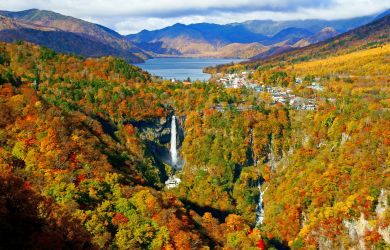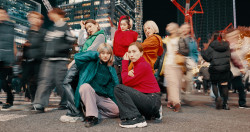
Originally published on metropolis.co.jp on February 2012

The road leading up to Nametoko, in Ehime Prefecture on the island of Shikoku, passes through some unremarkable scenery. But as the road narrows and driving becomes difficult, green valley walls plunge towards a rock-filled river. After about a kilometer of twisting, narrow road, a car park gives access to hiking trails paths on either side of the spectacular Nametoko Gorge.
Setting off, you find yourself surrounded by trees of every kind, mottled with mosses that only grow in pristine environments. Below you, the river churns and gushes through contorted channels carved through solid rock and fallen boulders. Besides wild monkeys, you are likely to encounter deer, snakes, buzzards, and large creatures glimpsed through trees that could be… well, anything really.
Sounds in the gorge can be puzzling. Following a path ominously signposted as “bad,” I found myself alone in front of an impressive waterfall coming down in streams across a broad cliff. I heard a sound of muffled barking like a distant pack of hounds chasing their prey, before realizing the sound was nearby—a mass of tiny frogs sat deep in the wet crevices, croaking with the benefit of natural amplification.

Nametoko has gained a place as one of Ehime’s “power spots;” locations notable for instilling awe in visitors. Inconceivably huge boulders sit in the river bed, topped with trees whose roots reach down to the soil many meters away. Humans have added their own decorations in the form of Shinto ropes, prayer paper and cairns of piled stones. Whatever you think of “natural power,” there’s something exhilarating about walking through these fantastic scenes of natural riot.
Even a ten-minute stroll here is rewarding, but you can spend all day hiking the trails to the top of the gorge and the mountain beyond. Near the car park, a cafeteria sells simple lunches, and a campsite and the stylish Morinokuni Hotel provide two very different types of accommodation.
In the summer, rainbow trout are released in the lower pools. For a small fee, you can rent a bamboo fishing pole with a lump of bait and spend several hours fishing. Even beginners will catch one or two of the fish, which are delicious grilled or barbecued later. But watch where you put the bait, or the monkeys will have it as quick as a flash.
Getting There
The nearest city is Uwajima, which is accessible from Tokyo by bus, train or plane. From there, local trains run to Matsumaru, and the trip to Nametoko would have to be done via taxi or rental car.
If you are going to rent a car, you could also fly from Tokyo Haneda to Matsuyama Airport (75 mins). Rent a car at the airport and get on the expressway at Iyo, bound for Uwajima. Get off at Uchiko Ikazaki and follow Route 229 south to Matsumaru. A good map is advised. From Matsumaru, follow the signs to Nametoko. Matsuyama to Matsumaru takes about 4 hours with rest stops, but the drive passes through some beautiful river valleys, and there are several service stations on the way to break up the journey. Morinokuni Hotel is a good base for exploring the area.
- Via JapanTourist
- More on Ehime, here







